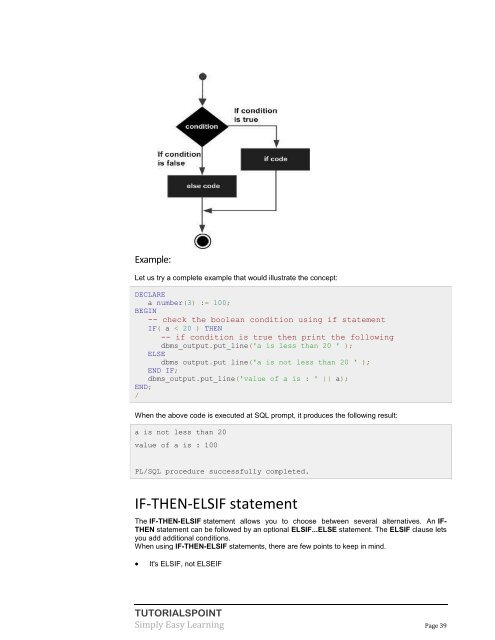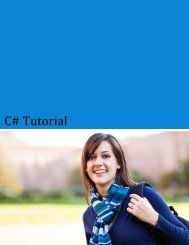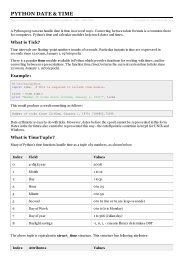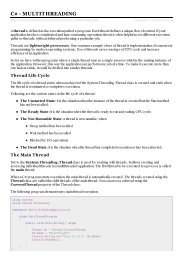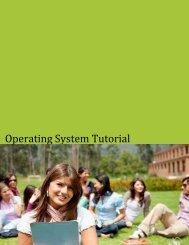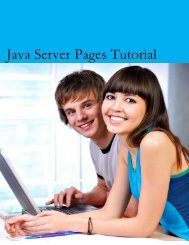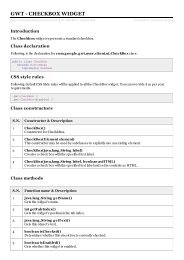download pl/sql tutorial (pdf - Tutorials Point
download pl/sql tutorial (pdf - Tutorials Point
download pl/sql tutorial (pdf - Tutorials Point
You also want an ePaper? Increase the reach of your titles
YUMPU automatically turns print PDFs into web optimized ePapers that Google loves.
Exam<strong>pl</strong>e:<br />
Let us try a com<strong>pl</strong>ete exam<strong>pl</strong>e that would illustrate the concept:<br />
DECLARE<br />
a number(3) := 100;<br />
BEGIN<br />
-- check the boolean condition using if statement<br />
IF( a < 20 ) THEN<br />
-- if condition is true then print the following<br />
dbms_output.put_line('a is less than 20 ' );<br />
ELSE<br />
dbms_output.put_line('a is not less than 20 ' );<br />
END IF;<br />
dbms_output.put_line('value of a is : ' || a);<br />
END;<br />
/<br />
When the above code is executed at SQL prompt, it produces the following result:<br />
a is not less than 20<br />
value of a is : 100<br />
PL/SQL procedure successfully com<strong>pl</strong>eted.<br />
IF-THEN-ELSIF statement<br />
The IF-THEN-ELSIF statement allows you to choose between several alternatives. An IF-<br />
THEN statement can be followed by an optional ELSIF...ELSE statement. The ELSIF clause lets<br />
you add additional conditions.<br />
When using IF-THEN-ELSIF statements, there are few points to keep in mind.<br />
<br />
It's ELSIF, not ELSEIF<br />
TUTORIALSPOINT<br />
Sim<strong>pl</strong>y Easy Learning Page 39


